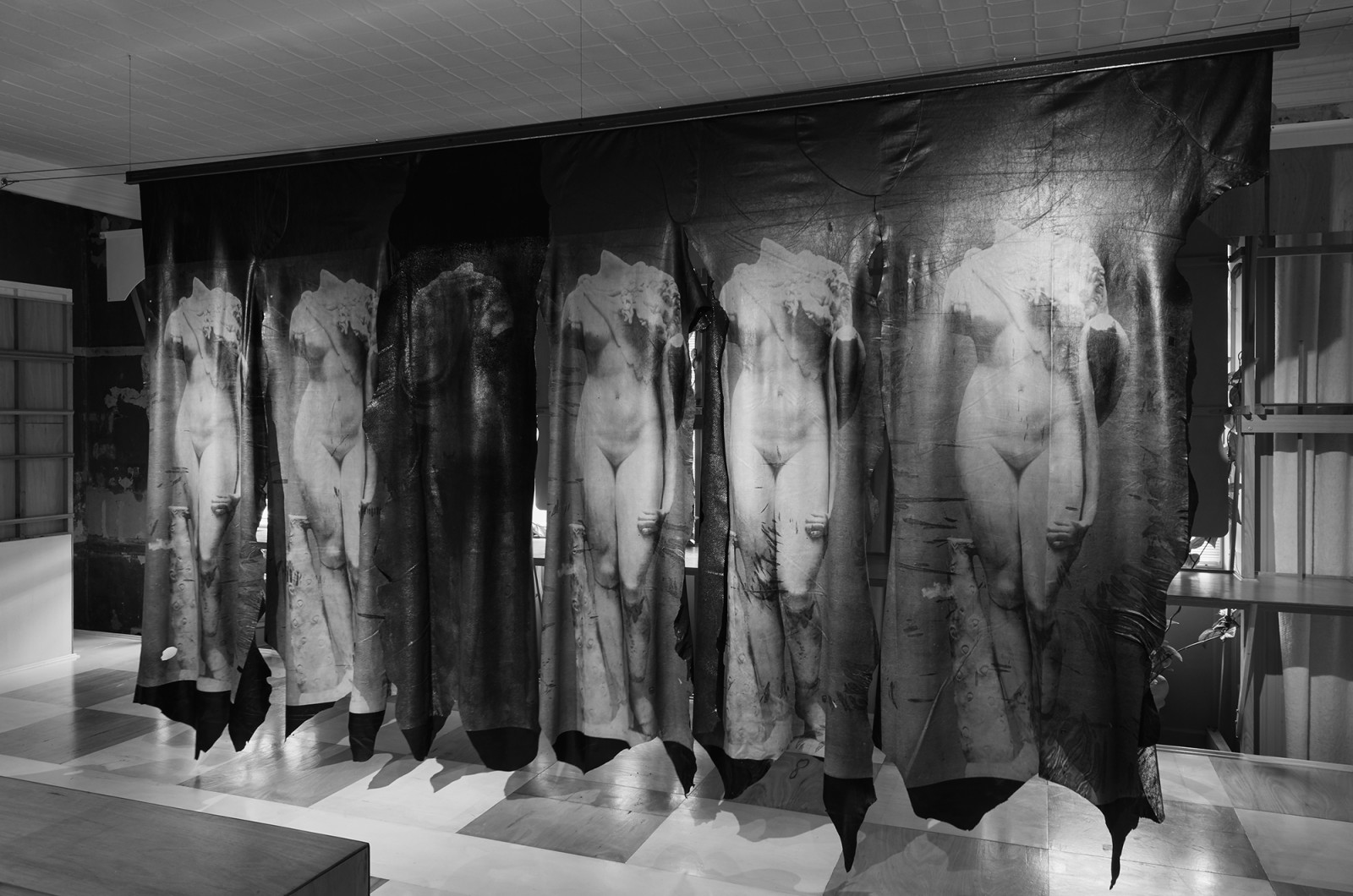Suspicious Marble (Omphale): 2017
hand printed screen-prints printed front and back of six leather hides
metallic foil, white ink, mild steel
210 x 397 cm
A melding of sculpture and photography, this leather screen takes as its point of departure two small late 19th century photographs that represent a marble statue of Omphale, a largely-overlooked woman from classical Graeco-Roman antiquity.
Omphale’s identity is established here by the fact that she is represented wearing the classical attributes of Herakles. Little is known of this mysterious, powerful queen of Lydia (contemporary western Turkiye), most of what is known comes down to us through Greek mythology.
In the Graeco-Roman tradition the story most frequently associated with Omphale involves Herakles’ enslavement to her as an act of atonement for his killing of his friend Iphitus. During the period of enslavement Omphale stipulates an exchange of their garments and a reversal of gendered social roles.
All renditions of the ancient narrative state that during his enslavement, the hyper-masculine hero was required to wear women’s clothing and undertake activities like spinning wool, while Omphale, wearing his Nemean lion skin, takes possession of his olivewood club and engages in men’s activities such as hunting.

Although well represented in ancient literary sources, little ancient material culture associated with the narrative survives. There is however a brief period in the history of Roman sculpture (during the transition from Republic to Empire), in which we see wealthy Roman women responding to their changing legal, economic, and social status by commissioning portraits of themselves in the style of Omphale.
After this brief appearance, Omphale disappears again before emerging (albeit briefly) in 19th century European musical, sculptural and decorative arts contexts.
Suspicious Marble (Omphale) considers relations between power and control, and the fluid nature of gender-based identity. Alongside these conceptual concerns with this work I further explore a recurrent theme in my practice - the relationships between the materiality of things, the body and the very human act of remembering.
The two archival photographic images reimagined in this artwork represent a manifestation (in stone) of soft human skin, around which is swathed the skin of another animal. By rescaling the original images to roughly human dimensions and printing them onto the skins of yet another animal I have tried to set up a framework for considering how materials help us to make meaning of things, and the roles that our bodies play in generating and apprehending meaning.
Presenting skin as both subject and object, I am pointing toward the theoretical concept of material semiosis wherein, for proponents of archaeology’s Material Engagement Theory, a material’s meaning emerges from the conceptual blending of one’s physical and mental responses to it during context specific engagements with it.
For further detail on Suspicious Marble (Omphale) in specific relation to Material Engagement Theory please, see my text From Limbo To Mashup and The Spell Of The Fake: Relating Contemporary Photographic Practice, The Photographic Archive and Material Engagement Theory which can be downloaded here